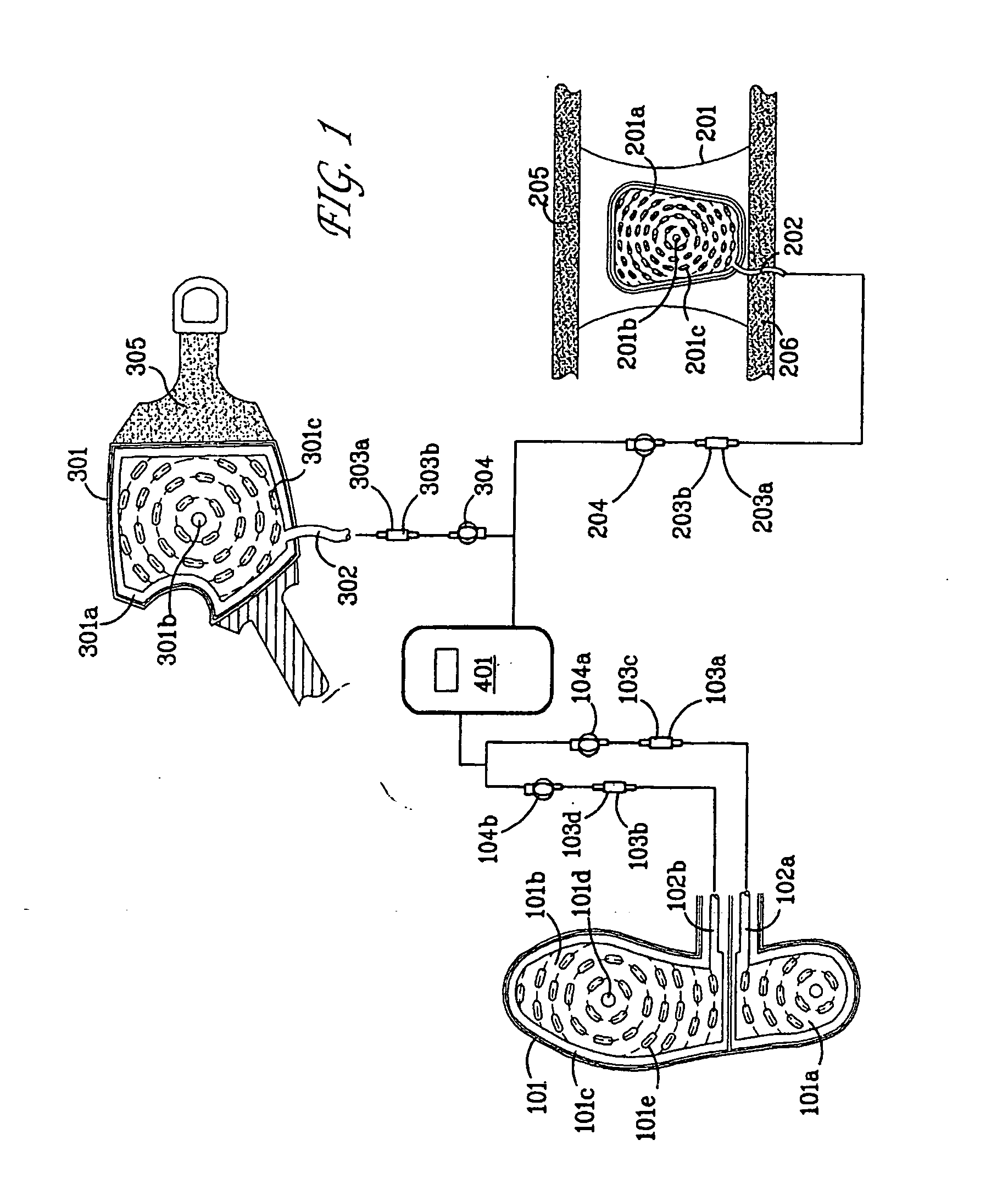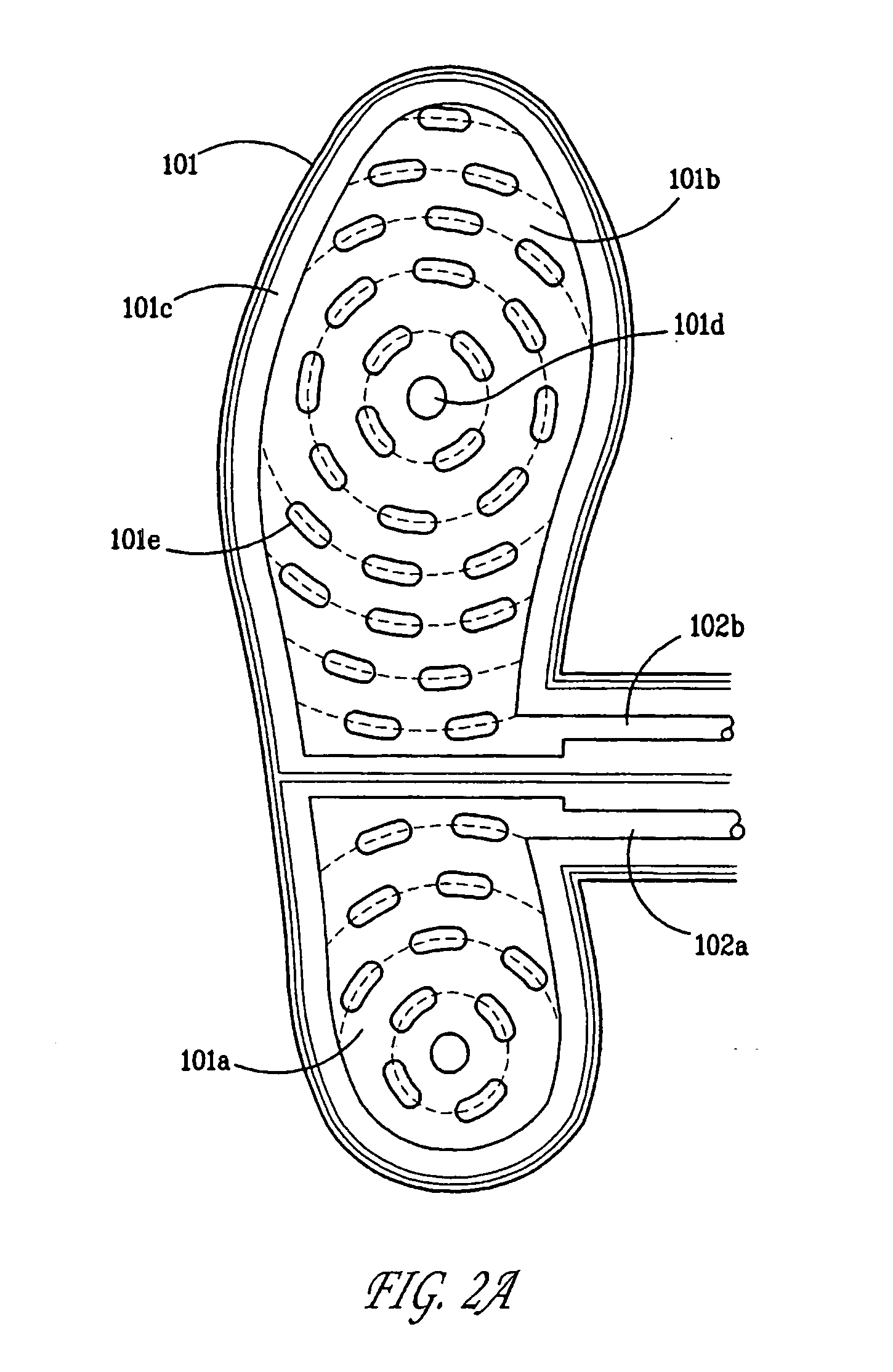Force sensor system for use in monitoring weight bearing
a sensor system and weight bearing technology, applied in the field of ergonomically designed force sensor systems, can solve the problems of spastic drop-foot, very thin sensor arrays, and low efficiency of health care, and achieve the effect of improving the quality of neurological rehabilitation
- Summary
- Abstract
- Description
- Claims
- Application Information
AI Technical Summary
Benefits of technology
Problems solved by technology
Method used
Image
Examples
Embodiment Construction
[0032] A system which meets the above-mentioned objects and provides other beneficial features in accordance with the presently preferred exemplary embodiment of the invention will be described below with reference to FIGS. 1-6. Those skilled in the art will readily appreciate that the description given herein with respect to those figures is for explanatory purposes only and is not intended in any way to limit the scope of the invention. Throughout the description, like reference numerals will refer to like elements in the respective figures.
[0033] Generally, the force sensor system comprises at least one of a foot force sensor, a palm force sensor, and a knee force sensor. Each of these individual sensors convert received pressure signals into electrical output signals representative of weight bearing on a location. The electrical output signals serve as input signals to an attached control unit of a weight bearing biofeedback system or an electrical stimulation system. Referring...
PUM
 Login to View More
Login to View More Abstract
Description
Claims
Application Information
 Login to View More
Login to View More - R&D
- Intellectual Property
- Life Sciences
- Materials
- Tech Scout
- Unparalleled Data Quality
- Higher Quality Content
- 60% Fewer Hallucinations
Browse by: Latest US Patents, China's latest patents, Technical Efficacy Thesaurus, Application Domain, Technology Topic, Popular Technical Reports.
© 2025 PatSnap. All rights reserved.Legal|Privacy policy|Modern Slavery Act Transparency Statement|Sitemap|About US| Contact US: help@patsnap.com



